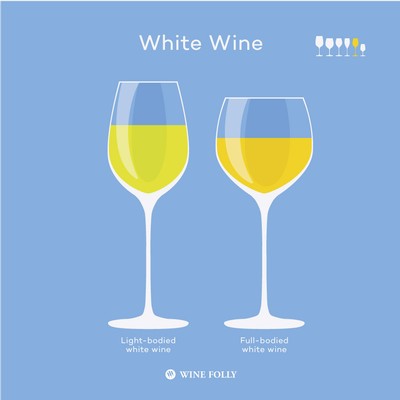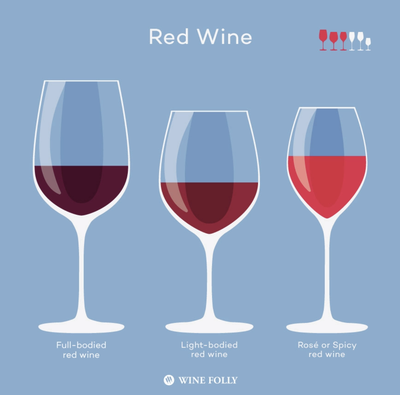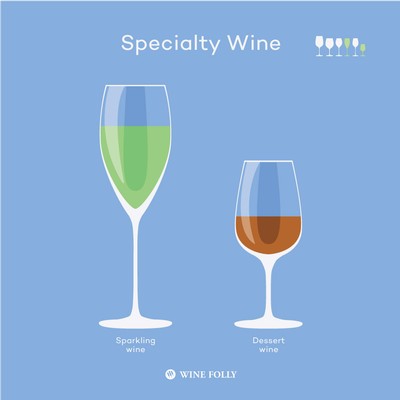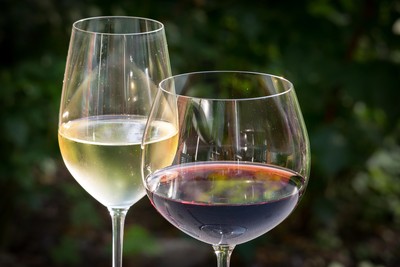Choosing The Best Wine Glass For You
Choosing The Best Wine Glass For You
There is no set rule when it comes to the type of glass you have to use when enjoying your favorite wine. But, if you really want to get the full experience out of what you’re drinking, experts recommend using the right type of wine glass. Who knows, you might be missing something!
You’re probably familiar with the two most common types of wine glasses - stemmed and stemless. Before we get into the different types of glasses that are available, let’s talk about the parts of a stemmed glass and how they work.
The parts include the:
- Base. Can also be referred to as the foot of the glass. This is required to keep the wine glass standing and stable.
- Stem. This is the part of the glass that the consumer holds and keeps the base and bowl together.
- Bowl. This is the part that holds the wine. When trying to figure out how much to fill, experts recommend filling it to the widest point of the bowl, this maximizes the wine’s contact with the air as you need space above the wine to collect the aromas.
The open space at the top of the glass allows the aromas of the wine to be collected. It also allows you to swirl the wine in the glass to help further release the aromas. While each of the above parts are featured in every glass, the bowl’s shape, size and style are the most important - depending on the variety of wine you’re enjoying.
White Wine Glasses
Wine experts recommend using smaller bowled glasses when serving white wine, like Sauvignon Blanc and Riesling. This shape of glass is great for white wine due to the fact that it helps preserve the floral aromas, maintains cooler temperatures, expresses more acidity in the wine, and delivers more aromas due to the proximity to the nose.
Now, if you’re drinking a full-bodied white wine, you will want to use a larger bowl glass. The wines that are better for this type of glass include oak-aged Chardonnay, Viognier, White Rioja, and orange wines. Larger bowled glasses help emphasize the creamy texture.

(One type of white wine glass is better at maintaining a cool temperature. The other is better at collecting aromas. Infographic courtesy of Wine Folly.)
Red Wine Glasses
When choosing the right glass for a red wine, you have to take into account the bitterness of tannins or spicy flavors in the wine. Wine Folly explains that there are three different shapes of wine glasses that work best for red wines.
If you are drinking a bolder red wine, like a Cabernet Sauvignon, Cabernet Franc, Alicante Bouschet, or Bordeaux Blends, try using a large “Bordeaux” glass. This glass delivers more aroma compounds to the nose instead of the burn of ethanol from being farther from the nose. The larger surface area of the glass allows the ethanol to evaporate and the wider opening makes for a smoother tasting wine.
A standard red wine glass is recommended for medium-to full-bodied red wines with spicy notes and/or high alcohol. Wines that are best enjoyed in this type of glass include Zinfandel, Malbec, Syrah, and Petite Sirah. Thanks to the small opening of the glass, the spice in the wine is softened because it hits your tongue more progressively.
Experts recommend using an aroma collector “Bourgogne” glass if you are enjoying a lighter, more delicate red wine with subtle aromas. The large round bowl of the glass allows all of the aromas to be collected. Try this glass with Pinot Noir, Gamay, Zweigelt, St. Laurent, Schiava, Freisa, Valpolicella blends, and Nebbiolo.

(The 3 primary red wine glass shapes help moderate high tannin wines, deliver more aromas, or make spicy-tasting wines more rounded. Infographic Courtesy of Wine Folly.)
Specialty Wine Glasses
Specialty wine glasses are used for sparkling wines and dessert wines. Port glasses are typically used for high alcohol wines because the small size and narrow mouth help reduce evaporation.

(Infographic Courtesy of Wine Folly)
Universal Glasses
If you only drink wine here and there and don’t want to have five different types of glasses in your cupboard, you would probably prefer to use a universal glass. But, if you’re a person who “only drinks bold reds” you might want to have your universal glass be a Bordeaux glass.
History
After reading this, you may be asking yourself “How did the reasoning behind so many wine glasses happen in the first place?” According to researchers, it was because of marketing tactics. VinePair explains that in 1973, Claus Riedel of the Riedel glassware company was looking for a way to sell more wine glasses. The way he decided to do this? The Riedel Sommelier series.
At the beginning, the series consisted of ten glasses of different shapes that were ideal for a certain type of wine. Riedel said the specific shape of the glass would aid a wine drinker in picking up every aroma of the wine and the shape would direct the wine to the exact part of the drinker’s mouth that would allow them to taste the wine best.
Unfortunately, in 2004, studies from Europe and the U.S. suggested his claims were nonsense. Yale University’s Linda Bartoshuk explains our “brains don’t care where taste is coming from in your mouth and researchers have known this for thirty years.”
Using a Wine Glass
Is there a correct way to hold a wine glass? Yes. When drinking from a wine glass, experts recommend holding it by the stem of the base of the glass. But why does where you hold it matter?

There are multiple reasons why holding the wine glass by the stem is beneficial. One of them is to prevent any smudges on the bowl of the glass. This allows you to easily assess the wine’s color and potentially learn even more things about it before tasting. While studying wine in this manner is used more by sommeliers, it is still fun to do it every once in a while.
Another reason to hold the glass by the stem is so you can swirl the wine. By swirling the liquid, you’re allowing the wine to open up and release its aromas. This practice can be key to unlocking flavors you wouldn’t otherwise taste.
The third, and probably most common, reason to hold the glass by the stem is so you don’t warm the wine up. If it gets too hot, the alcohol will evaporate at a quicker pace. This can lead to a flat tasting wine. When held by the stem, the wine stays at a proper temperature and will be at its best.
Experts explain that this practice is only relevant if the wine is served at the right temperature to begin with. If it is ice cold, grip the glass by the bowl to warm it up since all of its flavors and aromas shut down if it is served too cold.
When choosing your glass, it is always important to choose your preference because in the end, as long as the vino is enjoyed, that is all that matters.
Comments
Commenting has been turned off.Recent Posts
-
March 6, 2025
-
February 11, 2025
-
January 10, 2025
-
December 12, 2024
-
October 26, 2024
-
September 4, 2024
-
August 22, 2024
-
August 21, 2024
-
August 20, 2024
-
August 6, 2024
